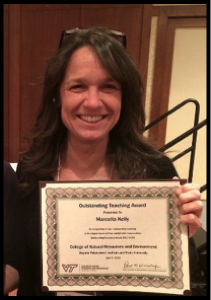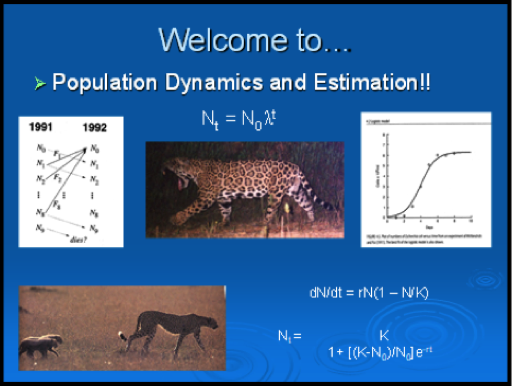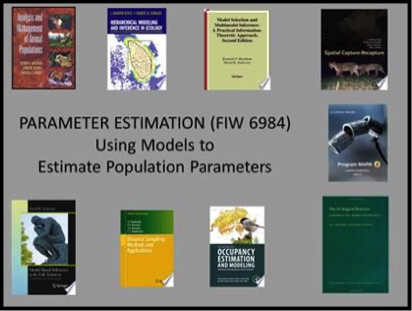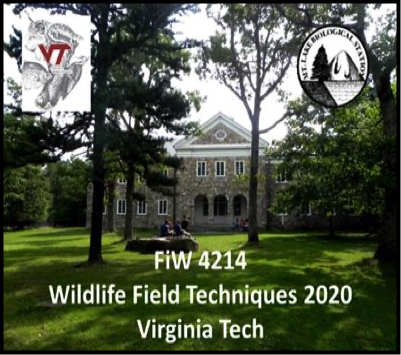
Effective teaching is necessary to reach a wide range of students from different backgrounds and with variable levels of experience.
I often think back to being a college student myself who was sometimes intimidated by professors or did not always understand certain course material.
When teaching I ask myself: How can I be accessible and non-intimidating, while reaching those students who are struggling and engaging those students that already have a solid handle on course material?
To accomplish this I engage students with course material in multiple ways to meet multiple learning styles of students, both in and out of the classroom.



Population Dynamics and Estimation
Taught from 2003-2017
Teaching quantitative material can be very difficult. So I approach this undergraduate course using traditional lectures and engaging students with real world data sets to solve problems related to wildlife and fish populations. Because students can be reluctant to ask a professor for help, I have tutoring sessions staffed by senior undergrads who received high marks in the course the previous year. These early evening sessions occur twice before each problem-set is due. I train the tutors to engage students thoughtfully and lead them in the right direction without providing them with the answers. These sessions are very popular with students. In addition, Graduate Students monitor an open Chat Room from 18:00--midnight for two nights before assignments are due, offering on-line help. And, of course, I have office hours to engage with students and appointments available to meet at a more convenient time.

Parameter Estimation
Taught 2011 and from 2012-present, alternate years
Similar to my undergraduate course, I engage graduate students with course material through a mixture of lectures, discussion of primary literature, and either simulated or real-world data sets to model various parameters of interest (e.g. occupancy, abundance, density, survival, etc). This course focuses on the theories and philosophies behind, and the methods for, estimating population parameters. I focus on the shift in paradigms from Frequentist Statistics to Information Theoretic to Bayesian approaches for data analysis. Lectures, discussions, and labs pull together common threads through readings and assignments, and through demonstrations and exercises with different modeling platforms, using problem-based learning. A graduate student who previously did well in the course serves as a teaching assistant to provide additional modeling assistance and peer-based mentorship.

Wildlife Field Techniques
Taught annually from 2001 to present
The ultimate in experiential and hands-on learning, this course meets in the classroom during the first 6 weeks of each Spring Semester for lab-based instruction. We then reconvene for a 10-day field intensive program in August at the Mountain Lake Biological Station (MLBS). Our team of 2 professors, 2 graduate students, 4 undergraduate teaching assistants, and multiple guest instructors guide students in a wide variety of techniques and skills most commonly used in wildlife research and management. This includes capture and handling of multiple wildlife species (birds, bats, small mammals, herps) and instruction in camera trapping, orienteering with compass and GPS, radio telemetry and triangulation, acoustic detection for bats, point counts for birds, and more. Student must also collect common animal and habitat data for the course, and complete group projects including data entry and analyses, and delivery of results in a final paper and live presentation. It is hard work, yes, and a LOT of fun!